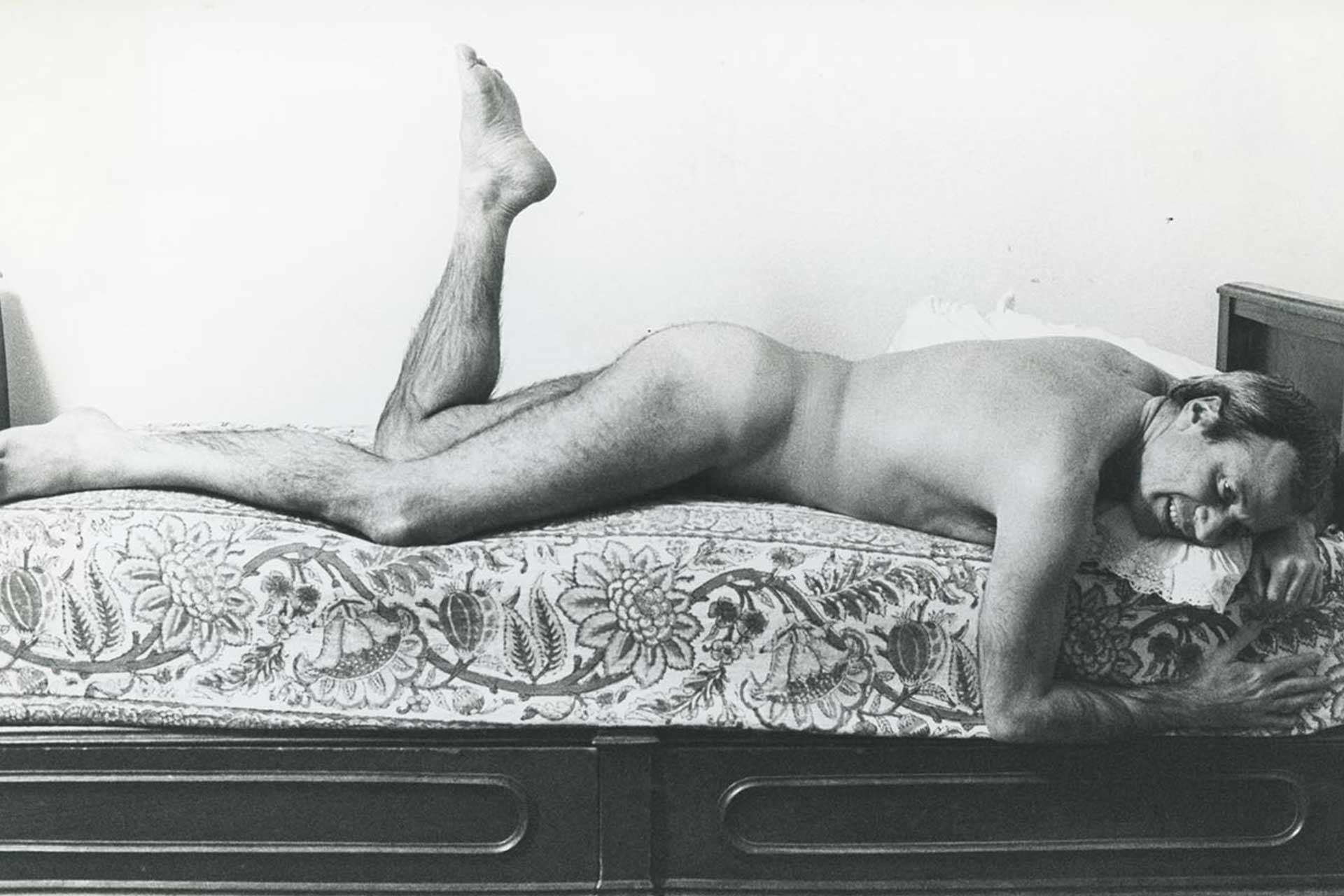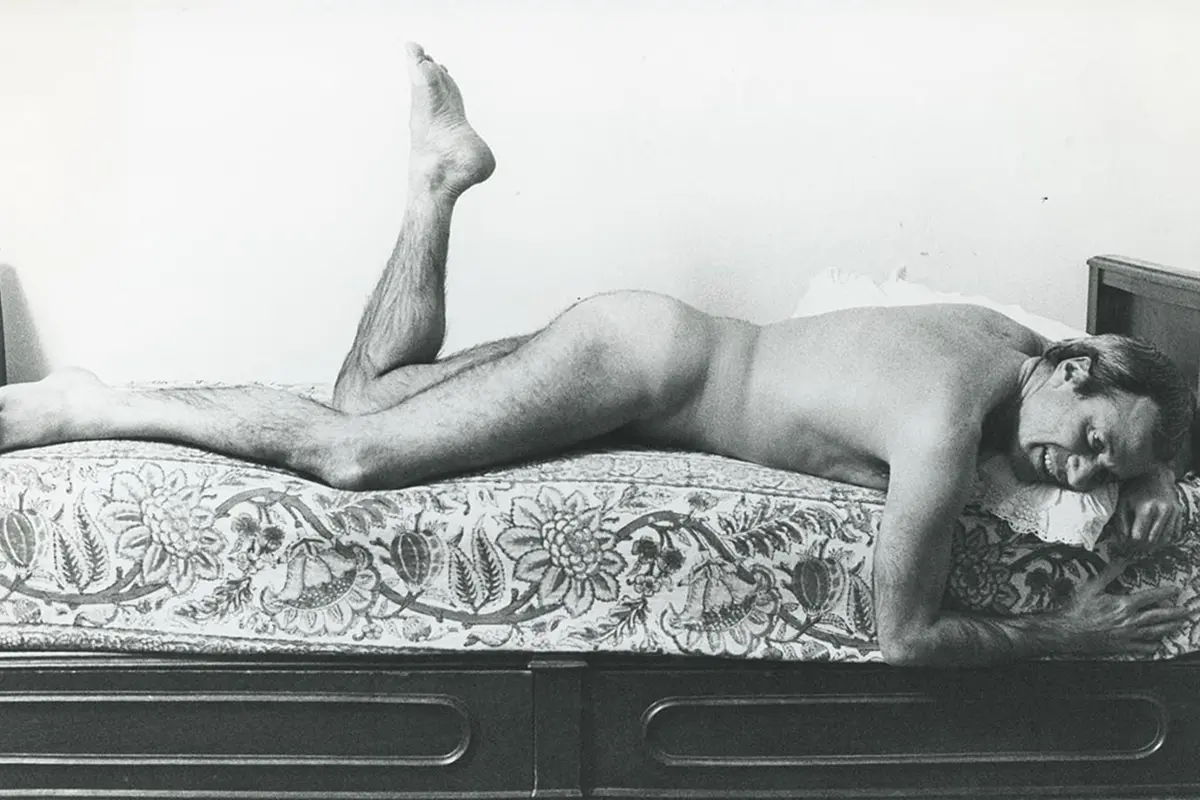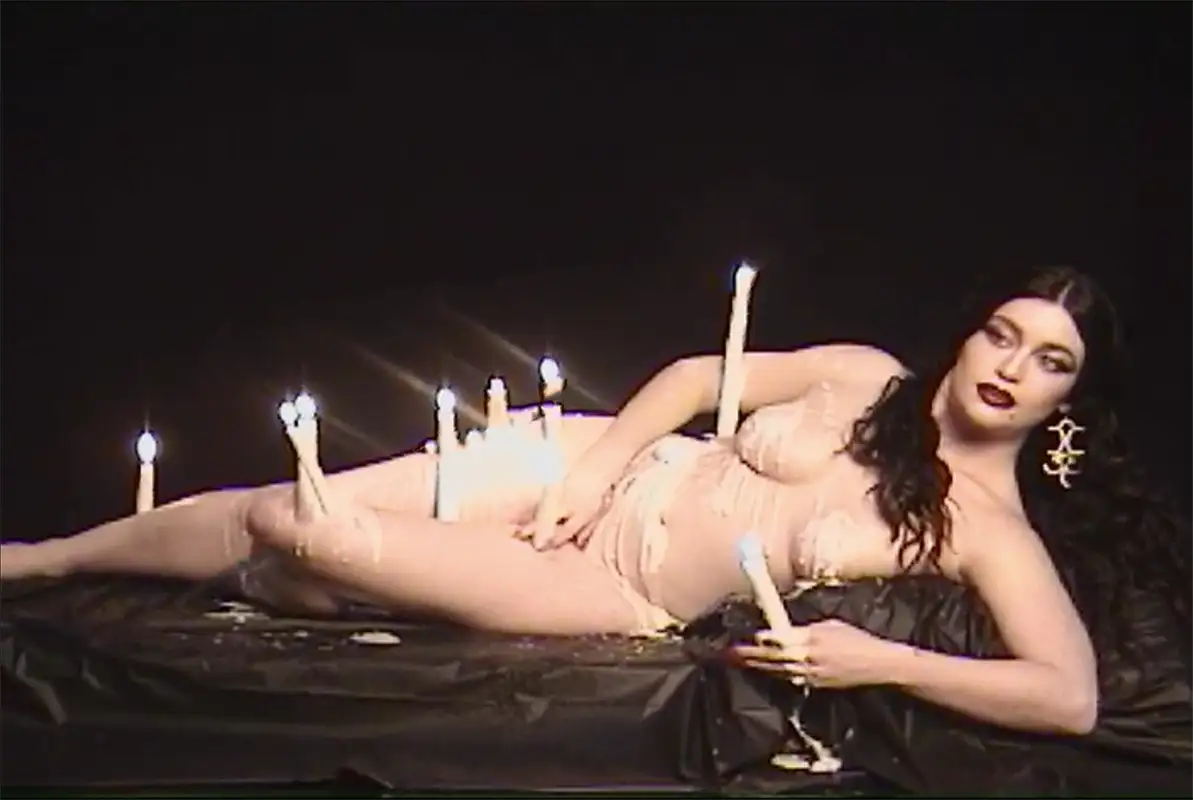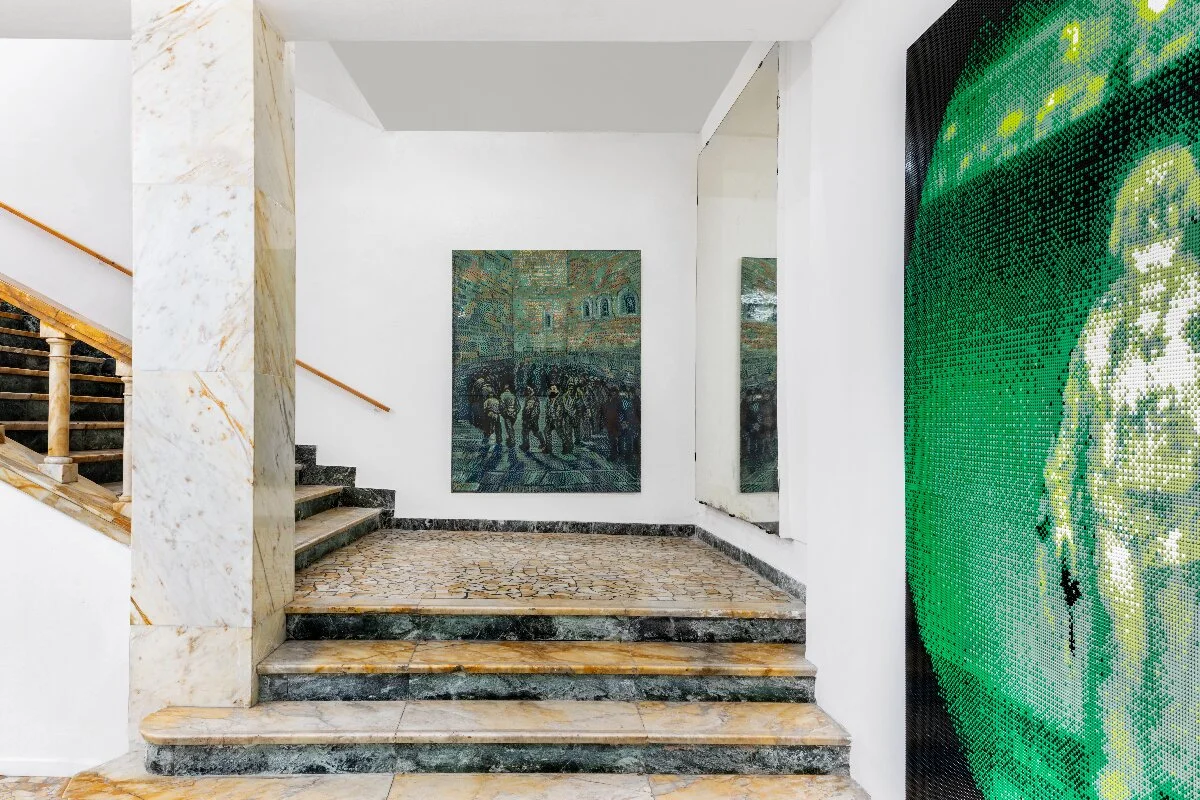«I never cared too much about what I have done in the past, I only care about what I am going to do when I grow up». An exhibition celebrates the work and life of Achille Bonito Oliva
Lampoon reviews the exhibition A.B.O. THEATRON. Art or Life
The exhibition A.B.O. THEATRON. Art or Life, organized by Castello di Rivoli Museo d’Arte Contemporanea and CRRI (Research Center of Castello di Rivoli), explores the work and life of contemporary art critic, historian and curators: Achille Bonito Oliva.
Following the exhibition dedicated to Harald Szeemann in 2019, organized in collaboration with the Getty Research Institute of Los Angeles, it constitutes the second chapter of an overall project dedicated to the most prominent contemporary art curators of the Twentieth and Twenty-first Centuries.
The project, based on an idea by Carolyn Christov-Bakargiev and Achille Bonito Oliva, has been developed by a curatorial team composed of Andrea Viliani, Head and Curator of CRRI, together with Marcella Beccaria, Chief Curator of the Museum’s Collections and Cecilia Casorati, Laura Cherubini, Stefano Chiodi and Paola Marino, art historians and curators who have followed Bonito Oliva’s curatorial work and activity of essay writing. Theatron – ‘theatre’ in ancient Greek – is a place of public entertainment, whose etymology derives from the verb theàomai, ‘to observe’.
The critical observation of art, and more in general of life, has been the starting point of Bonito Oliva’s work and research: «The history of art has not been written yet, everything can be reconsidered and revised» Viliani says about Bonito Oliva’s curatorial approach. The exhibition is the result of a two-years research work conducted by the curators on Bonito Oliva’s archive, which he donated to CRRI in conjunction with this exhibition.
Francesca Lavazza, who has been recently appointed President of Castello di Rivoli, stated that: «This exhibition and the heritage donated by Bonito Oliva to the Museum emphasize the relevance of the activities and pursuits of Castello di Rivoli: the Museum’s artistic vocation and the educational and formative role of CRRI’s research activity».
Achille Bonito Oliva and Gucci
Despite his obstinacy to not consider himself a «notarial and cadastral art critic», in over sixty years of activity, he has collected archive material which testifies his broad curatorial, performative, and theoretical activity, such as exhibition catalogues, essays and personal notes, many of them made public for the first time in occasion of this exhibition. In addition to his archive material, the scientific committee, headed by Viliani, in collaboration with RAI Teche, has included in the exhibition footage and clips of existing videos which reveal Bonito Oliva’s personality in the public space.
His tv appearances, video interviews, radio programs and the projects for magazines and newspapers, provide the visitors with the image of a critic and curator who, through media and pop culture mechanisms, has contributed to the development of his own personality cult. Among his most recent tv appearances is his conversation with Harry Style commissioned by Gucci for GucciFest 2020. On the occasion of A.B.O. THEATRON. Art or Life, Gucci has designed the uniforms worn by the gallery assistants. The staff, renamed in French ‘jardiniers du théatre’, accompany the visitors through the exhibition halls in sage-green uniforms.
The collaboration between the Museum and the fashion brand – which draws inspiration from the Gucci February 2020 fashion show when Alessandro Michele, creative director of the brand, and his team wore a similar grey uniform – highlights the need of the often-invisible workers of the art world. «Thanks to their revolutionary and sensory approach, in an age of digitization and immateriality, the contribution of our sponsor has been the key to the success of this exhibition» claims Christov-Bakargiev.
Achille Bonito Oliva’s curatorial process
Investigating Bonito Oliva’s practice and character, the exhibition unfolds in three different levels: exhibition curating, encyclopedic essay writing and his private sphere, and performative expressions and public activities. The first sector is devoted to some of Bonito Oliva’s most renowned exhibitions.
The exhibition opens with a portrait of a boy painted by an anonymous Mannerist painter which refers to his famous book L’ideologia del traditore. Arte, maniera, manierismo (The Ideology of the Traitor: Art, Manner and Mannerism) written in 1976 in which Bonito Oliva analyzes the figure of the artist in the passage from Renaissance, a time of creation, to Mannerism, characterized by the mere act of citation.
Losing their centrality in favor of science and technology, the artists behave like traitors who cannot accept the world but are incapable of changing it and act with skepticism, without naïve optimism. Similarly, the transit from the Seventies, marked by social crisis and political and ideological movements, to the Eighties, restores the role of the individual and the narcissistic right to think independently.
In 1979 Bonito Oliva theorized the beginning a of a new artistic movement called Transavanguardia, which dampened the original experimentation of the avant-garde movements and returned to more traditional artistic expressions, such as painting and sculpture. Artworks by Gino De Dominicis, Mimmo Paladino and Francesco Clemente, among others, lead the visitors to the following rooms in which the curators have recreated prominent art exhibitions curated by Bonito Oliva from the early Seventies until now.
Some of the exhibits included in this section are Amore mio (1970), in which Bonito Oliva himself is included among the artists, Vitalità del negativo (1970), whose title refers to the concept of art understood as a ‘negative’ cast of the world capable of altering the reality, Contemporanea (1973-74), his first multidisciplinary and international exhibition, Avanguardia Transavanguardia (1982), Ubi fluxus ibi motus (1990), and the 1993 Venice Biennale, the first nomad Biennale, where exhibitions and artworks were scattered across the city.
Displaying artworks by Twentieth Century’s Italian and international artists who range from Pino Pascali to Michelangelo Pistoletto, from Marcel Duchamp to Nam June Paik, the curatorial team has traced a timeline of Bonito Oliva’s curatorial activity exploring his multidisciplinary approach and fascination with the porosity and fluidity of the contemporary artistic languages and with the intersections between art and life, which he calls «nomadic transversality». «He has been able to disperse the artwork into words, new media, music and TV» Viliani says.
The role of the critic and curator in art
Through the presentation of a range of materials, such as catalogs, invitations, photographs, and a portion of his personal library, the second sector investigates Bonito Oliva’s more private and intimate sphere as well as his written work, which has played a key role in his curatorial career and personal life. «The word becomes visible; it is not just sound anymore» Bonito Oliva says about poetry and the power of written word. Bonito Oliva’s portraits by Italian artists of the caliber of Sandro Chia and Michelangelo Pistoletto as well as fragments of his correspondence with Yannis Kounellis testify the unique relationship he created with the artists he has collaborated with throughout the years.
The third level explores Bonito Oliva’s representation in the public sphere and his approach to curating and art criticism, which he defines an «unintentional inclination» and a «Socratic vocation for exchange and dialogue». His naked pictures for Frigidaire and his appearance in photo novels and comics, such as Martin Mystère, delineate the figure of an intellectual who was able to adapt his language skills to different audiences, from art experts to children.
His photoshoots for Frigidaire also express metaphorically Bonito Oliva’s intention of divesting himself of any prejudice or ideology and standing naked in front of art: «I never cared too much about what I have done in the past, I only care about what I am going to do when I grow up». The exhibition closes with Soffio di creta (1978) and Respirare l’ombra (1999) by Giuseppe Penone, in which the perception of the senses and the breath, understood as man’s creative act, are the protagonists of the artworks.
It is not by chance that among Bonito Oliva’s favorite artists are Duchamp, the first to betray and undo the concept of artwork, and Picasso, traitor to the traditional painting style. In Bonito Oliva’s words: «When I was little and people asked me ‘What do you want to be when you grow up?’, I used to answer, ‘A child’. Being a child means being guilt-free, almighty and unfettered by prejudice, even towards oneself».
From his first exhibitions held outside museums and institutional places to his latest projects for the Naples metro stations, which have been transformed into a widespread museum thanks to the artistic contribution of renowned designers and architects, Bonito Oliva managed to overcome the limitations imposed by the academic structures encouraging dialogue between art and life.
Achille Bonito Oliva art critic
Achille Bonito Oliva (Caggiano, 1939) is one of the most prominent art critics, historians, and curators of the Twentieth and Twenty-first centuries. In 1979, on the magazine Flash Art he publishes the article The Italian Trans-Avanat-garde, theorizing the movement as the overcoming of the ideological positions and conceptual matrices of the previous decade.
A.B.O. THEATRON. Art or Life aims at investigating Bonito Oliva’s curatorial and theoretical activity through three interconnected levels: exhibition curating, encyclopedic essay writing and his private sphere and performative expressions and public activities. The exhibition will be on view at the Castello di Rivoli Museo d’Arte Contemporanea until the 9th of January 2022.




















